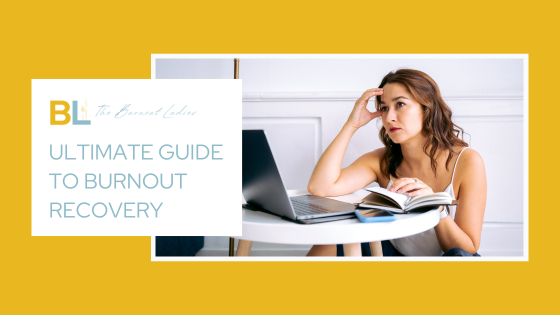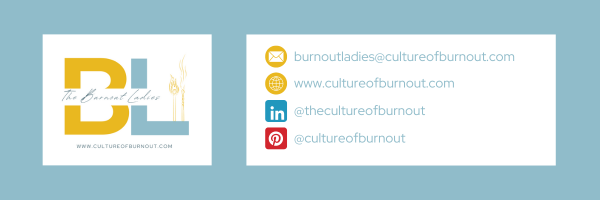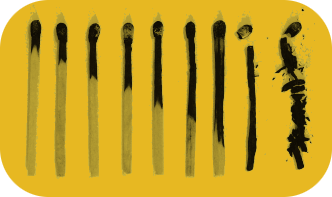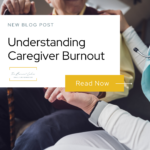
All of our best ideas come through conversations with each other, about anything (really). We can make a connection between burnout and Taylor Swift, but that’s not why we’re here today. We’re going to essentially transcribe a conversation we recently had about burnout recovery. This convo will share our process and our insights with you lovely readers.
Erin: Kristen
Kristen: Erin.
Erin: You just did a keynote on burnout. What was the main theme of the questions you got asked?
Kristen: I did! It was a room full of women leaders, but as we know, the solutions we have work for everyone. They were all curious about what you do once you recognize that you might be somewhere on the burnout spectrum.
Erin: Ah, yes. So many folks talk about how to prevent or avoid burnout. But what about the folks that are already in it. Is it too late for them or can we help them too? We know the answer to that is that it’s never too late, but burnout recovery has to be approached a little bit differently than burnout prevention.
Kristen: Yes! Great point. A lot depends on what burnout looks like specifically in someone’s life. Are they apathetic in one area, or in their whole life? Is family life harder than work life? Etc. I love the Four Rs framework because it’s incarnational. I know, nutty word, but that’s what it feels like to me – those concepts take on different shapes and definitions in each of us so that they work for us at whatever stage of burnout we’re in.
Erin: 100% Leave it up to you to use a word with religious meaning, but I get it, it really does provide the context that the Four R’s are flexible enough to help at any stage. So if we were to write our own Ultimate Guide to Burnout Recovery – it would have to start and end with those R’s, right? Let’s start with rest: how would you guide folks in burnout recovery to find their Rest?
Kristen: Listen, you can take me out of church leadership, but those decades of training are still floating around in there, haha.
Rest. Give me the hardest one for me to do, I see what you’re doing, E.
The first thing I’d encourage people to do is to get serious about their sleep – making sure they have enough, that’s deep and proper, so that their bodies and brains can reset as necessary. This might mean talking to a doctor, or could be as simple as setting boundaries around reading their phone in bed. But make sure nothing needs to change to maximize this R, and if it does, make the change.
What did you recommend for rejuvenation?
Erin: You know, I didn’t plan to give myself the easier R with rejuvenation, but it just worked out that way, lol.
As you always say, rejuvenation means joy, and joy is a required part of burnout recovery. If you know what makes you happy, do more of it. If you’re not sure what brings you joy, start small and start experimenting. We cannot survive life on this planet, and in this society, without things that bring us joy. We always say, as long as you’re not harming yourself or others, chase your joy. Practicing rejuvenation means recognizing that being a human is hard work, and we need joy to keep going.
What do you tell folks about realignment?
Kristen: Realignment is simple: remembering who you are. Whenever I say this to people I have Mufasa in my head, to be honest, and that’s kind of the vibe we mean by this one. You are a child of the universe, and that means you are beloved, and wanted, and important – but you are not the center of that universe and you get to delegate and take naps.
For those of us with a spiritual practice, this one is likely core to that practice. The idea of stopping for a certain amount of time daily/weekly to recognize that the universe is bigger than we are is often a core practice.
We often hear from people that this is the hardest R for them to build a personal practice to. I get it, it’s in deep contrast to our empirically driven world. There’s not really a way to measure this one. So think about a place where you feel peaceful, or calm. Maybe it’s not a place, it’s a physical pose, or a way of moving your body. In that moment, draw on the strength that comes from the fact that there are many people who have come before you and many who will come after and the world is not entirely on your shoulders. We promise. Now, build time to experience that into your schedule. You’ll thank us later.
Final R! Back to you, E!
Erin: Oooh, yes, such great advice in that one, K. Our final R may seem obvious, but it took us a while to realize it was missing from our list, and that’s reconnection. In short, reconnection means that we can’t recover from burnout alone. If you spend any time with us, you know that we’re always telling folks that burnout culture wants folks to feel lonely and isolated. Living in burnout culture means that our culture is always telling us that we’re a bad person if we need help – for any reason.
We, as your friendly neighborhood burnout experts, are here to tell you that’s bull. Burnout thrives in isolation, recovery happens in community. Reconnection might look different for you whether you are an introvert or extrovert, or whether you are married or single. But at the end of the day, we encourage you to reach out to folks who mean something to you. They are necessary for your burnout recovery.
Well, folks – we hope you’ve enjoyed our attempt to pull back the curtain of our minds, and show you a little behind the scenes with The Burnout Ladies. And we hope that this conversation has helped you understand what burnout recovery could look like for you.
If you want to learn more about our tips and insights on burnout, sign up for our newsletter here: https://bit.ly/COBnewsletter



